Wolfburn
Wolfburn is the northernmost distillery on the Scottish mainland. It was originally built in 1821 but had to close again in the course of the 19th century and today only ruins of the old complex remain. In 2011, a new distillery was built not far from the ruins and in the meantime the production volume has returned to the same level as in the 19th century. The logo features a wolf, whose related mythical creature, the so-called 'sea wolf', is said to bring good luck to all those who set eyes on it. In the 16th century, when the drawing for the Wolfburn logo was made, there were plenty of wolves in the area.
| Information about the Distillery | |
|---|---|
| Scotland, Highlands | |
| -3.550857 58.595596 | |
| Active | |
| 2013 | |
| 125,000 l | |
| http://www.wolfburn.com/ |
| Average tasting notes Tasting notes |
i
|
|
|---|---|---|
|
Nosing
Sweet:
Fruit:
Peat Smoke:
Maritime Notes:
Seaweed:
Sherry:
Oak:
Vanilla:
Malt:
Caramel:
Herbs:
Zitrus:
Spices:
Honey:
Chocolate:
Bonfire Smoke:
Raisin:
Herb:
Pear:
Nuts:
Fig:
Heather:
Barley:
Berries:
Wheat:
Grass:
Floral:
Apple:
Banana:
Green Apple:
Coffee:
Almonds:
Cherry:
Pineapple:
Dark Chocolate:
Dried Fruit:
Ginger:
Clove:
Plum:
Date:
Tropical Fruit:
Alcohol:
Hay:
Nutmeg:
Iodine:
Lemon:
Cinnamon:
Tobacco:
Peach:
Lime:
Black Currant:
Grape:
Mint:
Orange:
Oil:
Kiwi:
Salt:
Medicinal Smoke:
Blackberry:
Leather:
Cake:
Hazelnut:
Pepper:
Melon:
Coconut:
Strawberry:
Tasting
Sweet:
Fruit:
Peat Smoke:
Spices:
Malt:
Vanilla:
Sherry:
Nuts:
Oak:
Caramel:
Maritime Notes:
Herbs:
Seaweed:
Herb:
Chocolate:
Honey:
Floral:
Zitrus:
Barley:
Heather:
Dark Chocolate:
Pepper:
Almonds:
Oil:
Coffee:
Pear:
Wheat:
Salt:
Bonfire Smoke:
Grape:
Tropical Fruit:
Apple:
Ginger:
Alcohol:
Dried Fruit:
Hazelnut:
Chili:
Date:
Pineapple:
Plum:
Nutmeg:
Cherry:
Clove:
Orange:
Raisin:
Cinnamon:
Green Apple:
Banana:
Lemon:
Peach:
Grass:
Melon:
Ham:
Fig:
Berries:
Medicinal Smoke:
Leather:
Grapefruit:
Strawberry:
Coconut:
Anis:
Iodine:
Cake:
Lemon Peel:
Mint:
Rye:
Black Currant:
Walnut:
Hay:
Tobacco:
Lime:
Kiwi:
Blackberry:
Finish
Sweet:
Peat Smoke:
Fruit:
Spices:
Caramel:
Oak:
Nuts:
Sherry:
Oil:
Vanilla:
Malt:
Maritime Notes:
Chocolate:
Herb:
Seaweed:
Zitrus:
Bonfire Smoke:
Herbs:
Alcohol:
Honey:
Pepper:
Heather:
Dried Fruit:
Salt:
Chili:
Dark Chocolate:
Apple:
Fig:
Grapefruit:
Pear:
Floral:
Orange:
Barley:
Grape:
Coffee:
Ham:
Tobacco:
Wheat:
Ginger:
Almonds:
Cinnamon:
Cake:
Raisin:
Coconut:
Tropical Fruit:
Mint:
Berries:
Clove:
Plum:
Banana:
Green Apple:
Melon:
Date:
Lemon:
Hazelnut:
Lemon Peel:
|
||
The Whisky
Wolfburn is situated on the watercourse of the same name near the village of Thurso. The village’s name is derived from 'Thor's Town'. The distillery has been producing Whisky since 2013, the Wolfburn bottlings are so far without age statement. Aurora - named after the northern lights Aurora borealis - is a non-peated Single Malt composed of Bourbon and Sherry casks. Langskip is named after the ships of the Vikings and is bottled exclusively from Bourbon casks. Morven is Gaelic for 'big mountain'. The Whisky of the same name is the slightly smoky one from the Wolfburn distillery. With a peat level of 10 ppm in the malt, it has a slight smoky note in contrast to the other bottlings. Northland also shows very slight smoky accents, but these do not come from the mash, but from the casks. Northland matures in refill casks that formerly contained Islay Whisky.
The Production
The water for the production of Wolfburn Whisky comes from the stream of the same name, which also serves as the water source for the distillery. On two pot stills, the distillery produces about 125,000 litres of Whisky per year in the classic way. Classic in every sense, because the production relies heavily on manual labour. The only computer in production is connected to the mash tun and regulates its temperatures - otherwise everything at Wolfburn is analogue.
The Stills
The two stills at Wolfburn are, like all the equipment, from the Scottish company Forsyths. The only exception are the water tanks, which are actually the old washbacks from the now closed Speyside distillery Caperdonich. The wash still is filled with 5,500 litres, although its theoretical capacity would be higher. The spirit still holds 3,800 litres. Both are relatively wide and rather low, although the spirit still has a slightly different shape: it has a reflux bowl for extra copper contact, resulting in a classic, light, fruity North Highland Whisky.
The Mashing
9,000 litres of water are mixed with 1.1 tonnes of malt grist in the semi lauter mash tun. Starch and sugar are washed out of the mixture in three mashing processes, a procedure that takes a total of six hours. Ten months of the year Wolfburn produces a not at all smoky mash; two months a slightly smoky mash with about 10 ppm.
The Fermentation
The four washbacks, with a capacity of 9,000 litres, are filled just over halfway with 5,100 litres. This way, the foam does not rise to the very top of the washbacks during fermentation and they cannot overflow. To get the fermentation started, a special South African yeast is added to the washbacks. The very long fermentation time is between 76 and 90 hours. The resulting beer is therefore very light, fruity and floral.
Storage and Bottling
Wolfburn has four warehouses, known as 'Dunnage Warehouses', with clay floors and low ceilings, under which only a maximum of three casks are stacked. In 2021, planning began for a further warehouse, probably to allow Whiskies to mature longer for older bottlings in the future. As with the rest of the production, there is a lot of manual work in the warehouses. The casks, for example, are labelled by hand instead of being barcoded. Among them are many ex-Bourbon casks, hogsheads and classics like Sherry and Port casks, or sometimes Madeira casks. Unlike most distilleries, Wolfburn even has its own bottling plant, where bottling and labelling is done by the team themselves.
The History
In 1821 the distillery was founded by William Smith on the outskirts of Thurso. It took its name from the watercourse of the same name near the site. The distillery was built of hard and local Caithness stone slabs. These can still be seen in places. Smith invested heavily in the distillery and quickly became a major producer of Malt Whisky. In 1826 the annual production was 28,056 "Total Gallons of Proof Spirit" (about 125,000 litres). Wolfburn was run by the Smith family until 1850.
In 1872 the first Ordnance Survey map of the area was published and showed that the distillery appeared to be in ruins. In 1877 a new edition of this map was published. On this one the note "in ruins" had disappeared. It may therefore be that the distillery had been working intermittently.
The new distillery building is a short walk from the site of the old buildings and was built in 2011. Wolfburn produces about the same amount these days as it did under William Smith's leadership.
The Visitor Centre
Wolfburn does not have a visitor centre, but the team does offer tours of the production facility. On weekdays at 10am, 12pm and 2pm you have the opportunity to watch the craftsmen at work on their Single Malts. The 1.5-hour tour also includes a tasting of four Whiskies and a free glass.
Wolfburn Distillery
Henderson Park
Thurso
KW14 7XW
Tel: +44 (0)1847-891051
Email: info@wolfburn.com

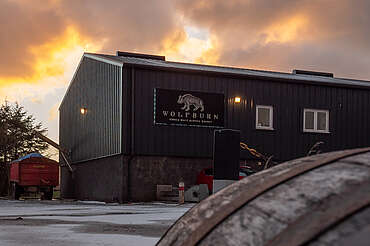
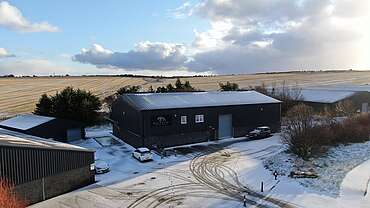
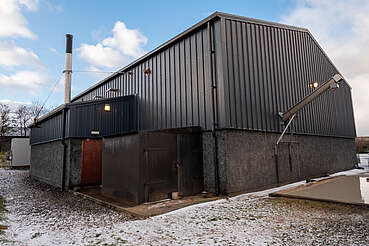
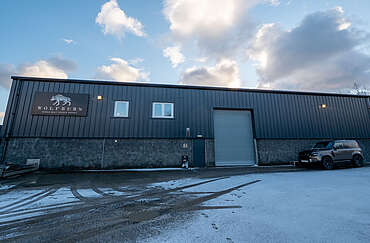
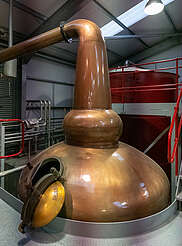
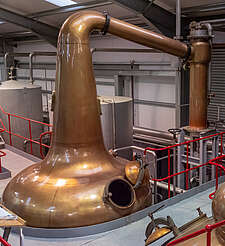
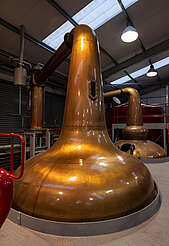
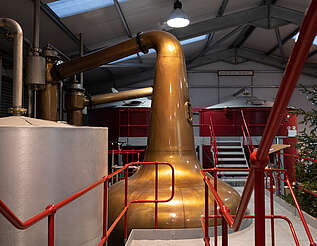
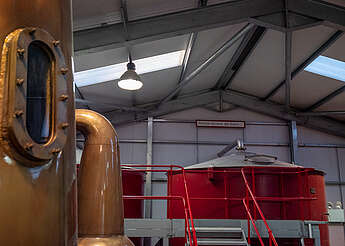
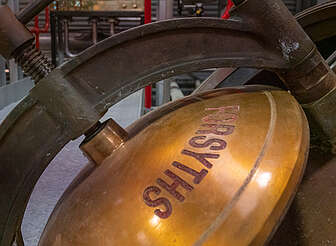
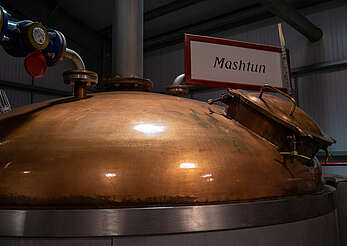
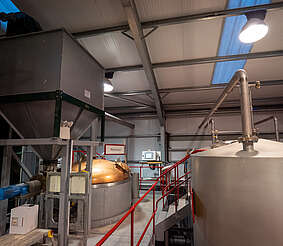
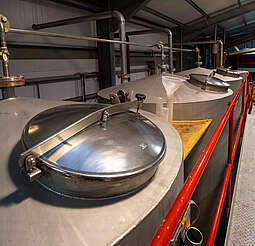
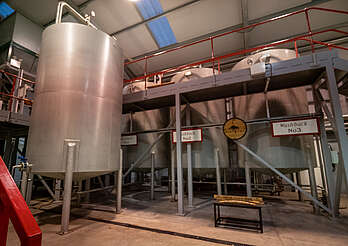
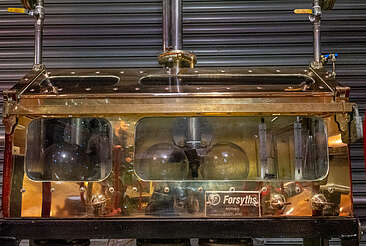
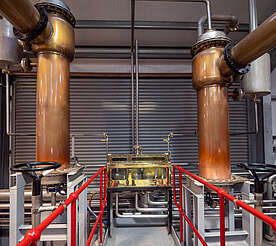
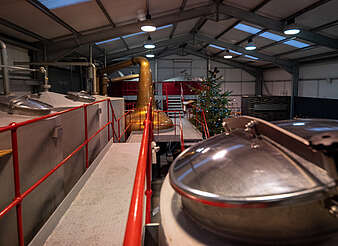
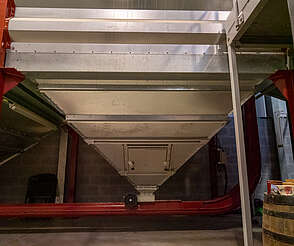
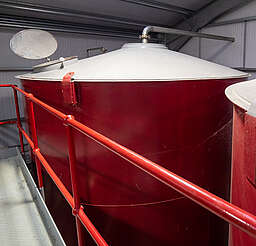
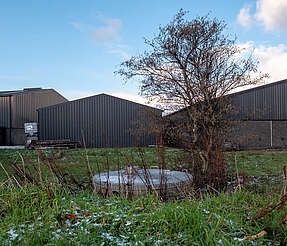
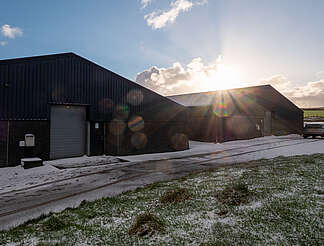
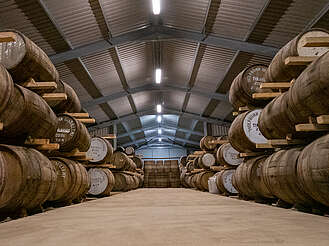
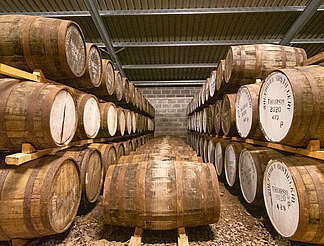
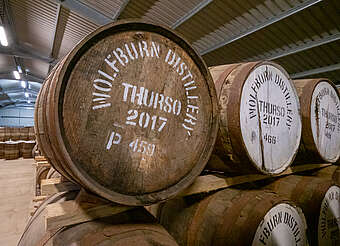
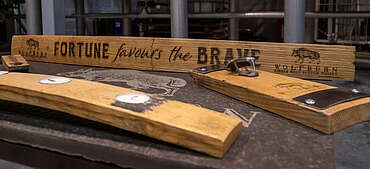
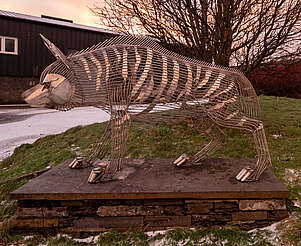
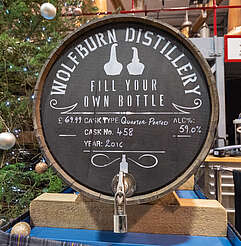
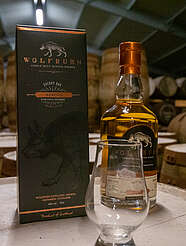
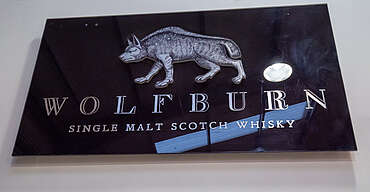
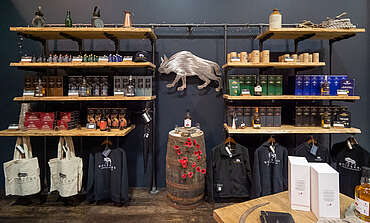
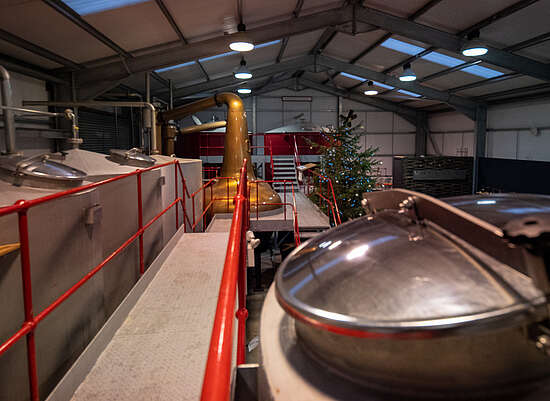
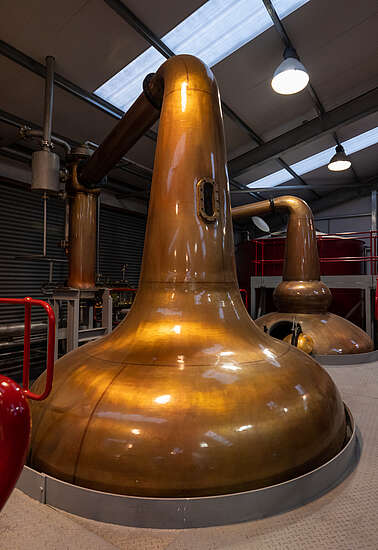
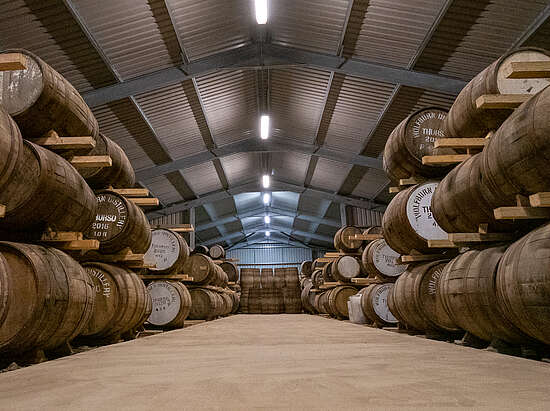
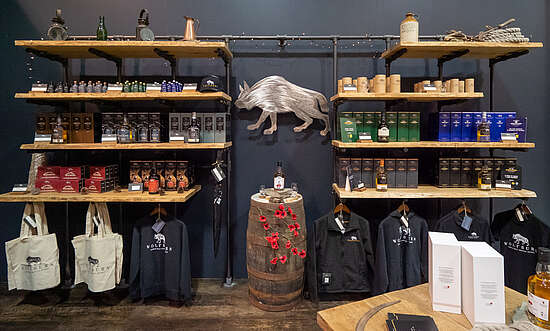
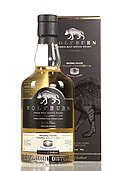
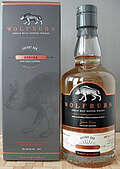
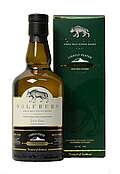
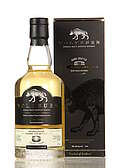
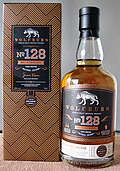
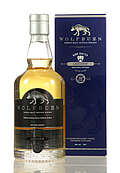
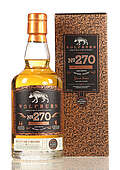
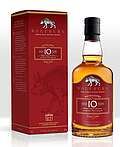
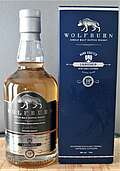
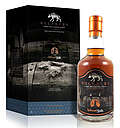












User Notes about the Distillery
Share your experience with other whisky lovers. Write a note about your trip to the Wolfburn distillery.